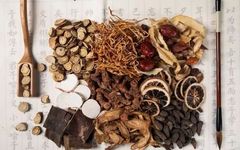(1) Complementary Properties of Herbs
Mulberry Root Bark (Sang Bai Pi), Scutellaria (Huang Qin), and Reed Root (Lu Gen)
Mulberry Root Bark clears lung heat and relieves cough, promotes urination and reduces swelling; Scutellaria clears heat, dries dampness, drains fire, detoxifies, stops bleeding, and stabilizes pregnancy; Reed Root clears heat, drains fire, generates fluids, alleviates thirst, stops vomiting, relieves irritability, and promotes urination. The combination of these three herbs is effective in treating lung heat cough and phlegm-damp obstructing the lungs, with heat being expelled through urination, draining fire while protecting yin.
Ephedra (Ma Huang) and Cinnamon Twig (Gui Zhi)
Ephedra and Cinnamon Twig are used together in the Ma Huang Tang from the Han Dynasty text, “Shang Han Lun” by Zhang Zhongjing. Ephedra is effective in dispersing lung qi, penetrating the skin, dispelling cold, inducing sweating, and promoting urination; Cinnamon Twig is good for inducing sweating, relieving muscle tension, reaching the nutritive and defensive qi, supporting spleen yang, and warming the meridians. Together, they are effective in treating wind-cold exterior excess patterns, enhancing sweating and resolving exterior conditions, warming and transforming cold phlegm, and harmonizing the nutritive and defensive qi, as well as warming the meridians to relieve pain. They are also used for various allergic skin diseases and autoimmune disorders.
Mulberry Leaves (Sang Ye) and Chrysanthemum (Ju Hua)
Mulberry Leaves and Chrysanthemum are used together in the Sang Ju Yin from the Qing Dynasty text, “Wen Bing Tiao Bian” by Wu Jutong. Mulberry Leaves disperse wind-heat, clear the lungs, moisten dryness, subdue liver yang, clear the liver, brighten the eyes, and cool the blood to stop bleeding; Chrysanthemum disperses wind-heat, subdues liver yang, clears the liver, brightens the eyes, and detoxifies. The synergy of these two herbs enhances the effects of dispersing wind, clearing heat, brightening the eyes, and detoxifying, making it more effective for dizziness, headaches, and cough due to liver fire.
Honeysuckle (Jin Yin Hua) and Forsythia (Lian Qiao)
Honeysuckle and Forsythia are used together in the Yin Qiao San from the Qing Dynasty text, “Wen Bing Tiao Bian” by Wu Jutong. Honeysuckle clears heat and detoxifies, disperses abscesses and reduces swelling, and is essential for treating both internal and external abscesses, as well as dispersing wind-heat and reaching the surface; Forsythia drains heat from the heart and clears heat from the upper jiao, making it a sacred herb for sores. Together, they have the function of clearing heat and detoxifying, reaching the surface, clearing internal heat and detoxifying, promoting the circulation of qi and blood, reducing swelling, and relieving pain. They are used for various wind-heat exterior patterns and heat-toxicity abscesses.
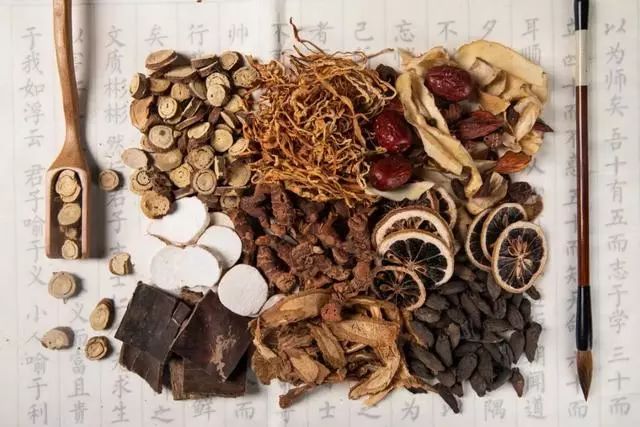
Gardenia (Zhi Zi) and Fermented Soybean (Dan Dou Chi)
Gardenia and Fermented Soybean are used together in the Zhi Zi Chi Tang from the Han Dynasty text, “Shang Han Lun” by Zhang Zhongjing. Fresh Gardenia moves through the qi level, draining the stagnant fire from the three jiao, expelled through urination, while dried Gardenia reaches the blood level, cooling the blood and stopping bleeding, clearing both qi and blood; Fermented Soybean releases the exterior, alleviates irritability, regulates qi, and harmonizes the middle. Together, they clear heat and relieve irritability, effectively addressing both internal and external conditions. They are used for damp-heat jaundice and irritability with insomnia.
Gypsum (Sheng Shi Gao) and Anemarrhena (Zhi Mu)
Gypsum and Anemarrhena are used together in the Bai Hu Tang from the Han Dynasty text, “Shang Han Lun” by Zhang Zhongjing. Gypsum is heavy and descends, dispersing heat, clearing heat and draining fire, alleviating irritability and thirst, and is essential for clearing excess heat in the lung and stomach qi levels; Anemarrhena clears lung metal and drains fire, nourishing stomach yin, and draining rootless kidney fire, addressing both deficiency and excess. Together, they enhance the effects of clearing heat, relieving muscle tension, stopping cough, relieving asthma, and lowering blood sugar, with Gypsum clearing and Anemarrhena nourishing, creating a harmonious balance. They are used for warm disease with excess heat in the qi level and for diabetes.
Salvia (Dan Shen) and Kudzu Root (Ge Gen)
Salvia and Kudzu Root are used together, based on the experience of Wang Shi, initially from a formula for clearing turbidity. Salvia invigorates blood, regulates menstruation, alleviates pain, cools blood, and resolves abscesses; Kudzu Root releases muscle tension, reduces fever, induces rashes, generates fluids, alleviates thirst, and raises yang to stop diarrhea. Together, they invigorate blood, resolve stasis, lower lipids, and calm the mind. They are used for hypertension, dizziness, and allergic purpura.
Trichosanthes Peel (Gua Lou Pi) and Sandalwood (Xiang Ren)
Trichosanthes Peel and Sandalwood are used together in a formula for tonifying qi, nourishing yin, and strengthening the heart. Trichosanthes clears heat, transforms phlegm, and opens the chest; Sandalwood stops bleeding and relieves pain externally, while internally it resolves stasis and stops bleeding, regulating qi and relieving pain. Together, they promote chest opening, regulate qi, transform phlegm, and resolve stasis. They are used for chest obstruction due to phlegm and stasis, hyperlipidemia, and heart disease.
Peony Root (Mu Dan Pi) and Gardenia (Shan Zhi)
Peony Root and Gardenia are used together in the modified Xiao Yao San from the “Summary of Internal Medicine”. Peony Root clears heat, cools blood, and invigorates blood; Gardenia has effects as described in the combination with Fermented Soybean. Together, they clear the liver, cool the blood, drain fire, relieve depression, and regulate menstruation. They are used for various depressive conditions and menstrual disorders.
South and North Sand Ginseng (Nan Sha Shen and Bei Sha Shen)
South and North Sand Ginseng are differentiated by their purity. South Sand Ginseng nourishes yin, clears the lungs, clears the stomach, generates fluids, and tonifies qi; North Sand Ginseng tonifies lung yin, clears lung heat, and benefits the stomach. Together, they nourish the yin of the lungs and stomach, clear heat, and tonify both qi and yin, promoting each other. They are used for cough, pharyngitis, liver disease, and nephritis.
Sand Ginseng (Sha Shen) and Ophiopogon (Mai Dong)
Sand Ginseng and Ophiopogon are used together in the Sha Shen Mai Dong Tang from the Qing Dynasty text, “Wen Bing Tiao Bian”. Sand Ginseng nourishes the yin of the five organs, especially the lungs and stomach, as described in the effects of South and North Sand Ginseng; Ophiopogon nourishes yin, generates fluids, moistens the lungs, and clears the heart. Together, they provide sweet cold relief, gently nourishing, and promote the functions of clearing and nourishing the lungs and stomach, generating fluids, and moistening dryness. They are used for various patterns of spleen and stomach yin deficiency.
Acorus (Shi Chang Pu) and Polygala (Yuan Zhi)
Acorus and Polygala are used together in the Yuan Zhi Tang from the “Sheng Ji Zong Lu”. Acorus opens the orifices and awakens the spirit, transforms dampness, harmonizes the stomach, and calms the spirit; Polygala promotes the flow of qi, calms the spirit, benefits the intellect, resolves phlegm, and disperses abscesses. Together, they clear phlegm, open the orifices, and directly address the disease. They are used for dizziness, tinnitus, insomnia, and epilepsy.
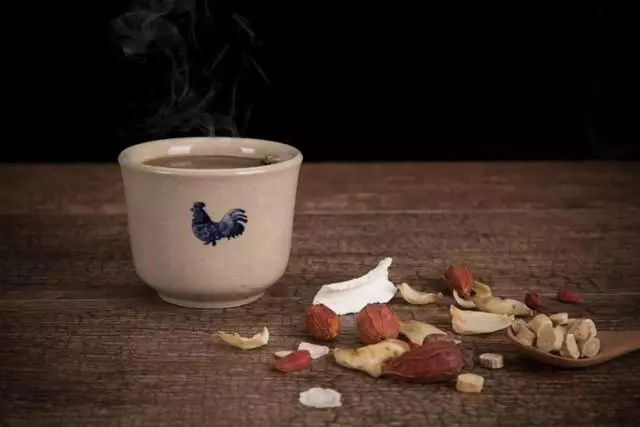
Magnetite (Ling Ci Shi) and Schisandra (Wu Wei Zi)
Magnetite and Schisandra are used together in the Er Cong Zi Wan from the “Revised Comprehensive Treatise on Warm Diseases”. Magnetite calms the spirit, pacifies the liver, sharpens hearing and vision, and regulates qi to relieve asthma; Schisandra astringes, nourishes qi, generates fluids, and calms the heart. Together, they nourish the kidneys, calm the spirit, open the ear orifices, and stabilize the mind. They are used for tinnitus, hearing loss, and palpitations.
Schizonepeta (Jing Jie) and Siler (Fang Feng)
Schizonepeta and Siler are used together in the Jing Fang San from the Qing Dynasty text, “Medical Notes” by Xu Huixi. Schizonepeta releases the exterior and disperses wind, with a neutral property, dispelling rashes and sores, effective for both cold and heat, and can be charred to stop bleeding, commonly used in gynecology; Siler disperses wind, relieves dampness, and alleviates pain, with a sweet, mild, and moist property, dispelling wind throughout the body. Together, they complement each other, warming without drying, enhancing the effects of dispelling wind, releasing the exterior, expelling evil qi, relieving dampness, and stopping bleeding. They are used for various skin diseases, external pathogens, and internal bleeding conditions.
Chinese Yam (Huang Shan Yao) and Huai Wheat (Huai Xiao Mai)
Chinese Yam and Huai Wheat are used together in a formula for regulating the liver and spleen. Chinese Yam tonifies the spleen, nourishes the stomach, generates fluids, and tonifies the kidneys; Huai Wheat nourishes the heart, alleviates irritability, and calms the spirit. This combination not only strengthens the spleen and stomach, but also nourishes the heart, calms the spirit, alleviates irritability, and aids sleep. They are used for menopausal syndrome, diabetes, and insomnia.
Cyperus (Wu Yao) and Fennel (Xiao Hui Xiang)
Cyperus and Fennel are used together in the Tian Tai Wu Yao San from the “Medical Inventions”. Cyperus promotes qi and alleviates pain, warms the kidneys, and dispels cold; Fennel warms the kidneys, warms the liver, dispels cold, alleviates pain, and regulates qi and harmonizes the stomach. Together, they harmonize the stomach, warm the middle, regulate qi, and dispel cold to relieve pain. They are used for various pain conditions.
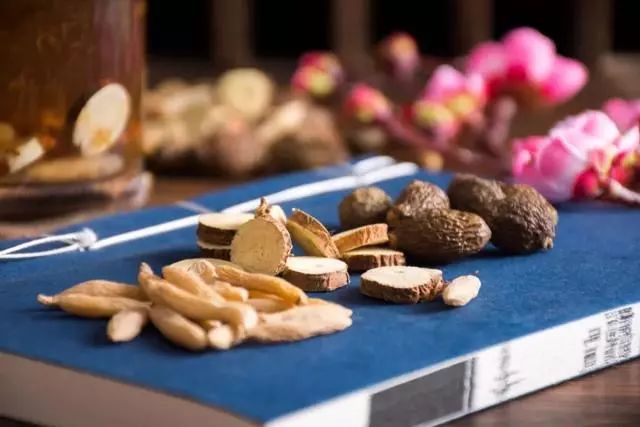
Epimedium (Xian Mao) and Epimedium (Xian Ling Pi)
Epimedium and Epimedium are used together in the Er Xian Tang from the “Clinical Handbook of Traditional Chinese Medicine”. Epimedium is spicy, hot, and dry, good for tonifying the Ming Men, invigorating yang, warming the kidneys, and dispelling cold and damp; Epimedium tonifies the kidneys, strengthens yang, and dispels wind and damp. Together, they warm the kidneys, strengthen yang, and invigorate kidney qi. They are used for menopausal syndrome, infertility, and dizziness.
Ligustrum (Nu Zhen Zi) and Eclipta (Han Lian Cao)
Ligustrum and Eclipta are used together in the Er Zhi Wan from the Ming Dynasty text, “Zheng Zhi Zhun Sheng”. Ligustrum nourishes the liver and kidneys, strengthens the waist and knees, darkens hair, and benefits the eyes and ears; Eclipta nourishes the liver and kidneys, promotes hair growth, and cools blood to stop bleeding. Together, they nourish the liver and kidneys and clear the fire. They are used for blood conditions due to yin deficiency, hair loss, and menstrual disorders.
Plantago (Ze Lan Ye), Leech (Shui Zhi), and Chinese Achyranthes (Chuan Niu Xi)
Plantago, Leech, and Chinese Achyranthes are used together based on years of clinical experience by Wang Shi. Plantago invigorates blood, regulates menstruation, resolves stasis, and reduces swelling; Leech breaks blood, promotes menstruation, and resolves stasis; Chinese Achyranthes invigorates blood, promotes menstruation, and facilitates urination, guiding fire (blood) downward, tonifying the liver and kidneys, and strengthening the bones. Together, they invigorate blood, open the channels, promote dampness, resolve stasis, and facilitate urination. They are used for various blood stasis conditions, edema, and urinary issues.
Astragalus (Huang Qi), Polygonatum (Huang Jing), and Gynostemma (Jiao Gu Lan)
Astragalus, Polygonatum, and Gynostemma are used together based on years of clinical experience by Wang Shi. Astragalus tonifies the spleen and middle, raises yang, strengthens the defensive qi, promotes urination, reduces swelling, and expels toxins; Polygonatum nourishes qi and yin, tonifies the spleen, moistens the lungs, and tonifies the kidneys; Gynostemma transforms phlegm, stops cough, and clears heat and detoxifies. Together, they tonify deficiencies, regulate the five organs, and enhance qi, lower lipids, strengthen the spleen, and benefit the kidneys while dispelling wind and transforming dampness.
Beehive (Lu Feng Fang), Tian Long (Tian Long), and Earthworm (Di Long)
Beehive, Tian Long, and Earthworm are used together based on years of clinical experience by Wang Shi. Beehive attacks toxins, kills insects, breaks down accumulations, and relieves pain; Tian Long dispels wind, calms seizures, and opens channels; Earthworm clears heat, calms seizures, opens channels, relieves asthma, and promotes urination. Together, they open channels, attack accumulations, and relieve pain, suitable for early-stage gastric cancer, lung cancer, or atypical hyperplasia of the stomach and lungs.
Cicada Slough (Chan Tui), Silkworm (Jiang Can), and Snake Skin (She Tui)
Cicada Slough, Silkworm, and Snake Skin are used together in a modified formula for relieving throat and opening obstructions. Cicada Slough disperses and releases, clears wind-heat, relieves throat discomfort, induces rashes, clears vision, and stops spasms; Silkworm dispels wind, calms seizures, transforms phlegm, and relieves pain; Snake Skin dispels wind, calms seizures, clears vision, and detoxifies. Together, they disperse wind, relieve throat discomfort, and detoxify. They are used for various allergic conditions.
Honeysuckle (Zao Xiu) and Three-leaf Green (San Ye Qing)
Honeysuckle and Three-leaf Green are used together based on years of clinical experience by Wang Shi. Honeysuckle clears heat, detoxifies, reduces swelling, relieves pain, cools the liver, and calms seizures; Three-leaf Green clears heat, detoxifies, invigorates blood, and relieves pain. Together, they clear heat, detoxify, invigorate blood, reduce swelling, and relieve pain.
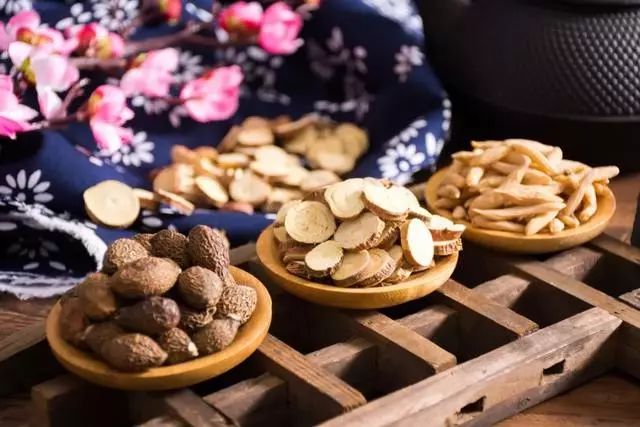
(2) Contradictory Properties of Herbs
Chuan Lian (Chuan Lian) and Wu Zhu Yu (Wu Zhu Yu)
Chuan Lian and Wu Zhu Yu are used together in the Zuo Jin Wan from the Yuan Dynasty text, “Dan Xi Xin Fa” by Zhu Zhenheng. Chuan Lian is very bitter and cold, entering the heart to drain fire, clear heat, and dry dampness, especially effective for clearing damp-heat in the middle jiao; Wu Zhu Yu is very acrid and hot, dispersing liver qi and relieving stagnation, stopping vomiting. Together, one is cold and the other is hot, with acrid opening and bitter descending, complementing each other to clear the liver, drain fire, and stop vomiting. They are used for various stomach diseases.
Rhubarb (Da Huang) and Aconite (Fu Zi)
Rhubarb and Aconite are used together in the Da Huang Fu Zi Tang from the Han Dynasty text, “Jin Kui Yao Lue”. Rhubarb purges and promotes bowel movements, clears heat, detoxifies, and resolves stasis; Aconite is very acrid and hot, supporting heart yang, warming spleen yang, and tonifying kidney yang, while also dispelling cold and relieving pain, known as the “first medicine for returning yang and rescuing from reversal”. Together, one is cold and the other is hot, harmonizing yin and yang, with acrid opening and bitter descending, detoxifying and clearing turbidity. They are used for kidney disease, uremia, and intestinal abscesses.
Goji Berries (Gou Qi Zi) and Chrysanthemum (Ju Hua)
Goji Berries and Chrysanthemum are used together in the Qi Ju Di Huang Wan from the Qing Dynasty text, “Yi Ji” by Dong Xiyuan. Goji Berries nourish the liver and kidneys, benefit essence, and brighten the eyes; Chrysanthemum has effects as described in the combination with Mulberry Leaves. Together, they nourish while clearing, and clear while nourishing, effectively benefiting the liver and brightening the eyes. They are used for hypertension and various brain diseases.
Chuan Lian (Chuan Lian) and Dried Ginger (Gan Jiang)
Chuan Lian and Dried Ginger are used together in the Ban Xia Xie Xin Tang from the Han Dynasty text, “Shang Han Lun”. Chuan Lian has effects as described in the combination with Wu Zhu Yu; Dried Ginger warms the middle, disperses cold, strengthens spleen yang, and warms the middle jiao, while also returning yang and opening channels. Together, they balance cold and heat, with acrid opening and bitter descending, harmonizing the stomach and lowering blood sugar, relieving pain. They are used for various stomach diseases and diarrhea.
Atractylodes (Cang Zhu) and Scrophularia (Xuan Shen)
Atractylodes and Scrophularia are used together in a formula for balancing and lowering blood sugar. Atractylodes is acrid and drying, dispelling dampness, strengthening the spleen, and expelling wind; Scrophularia nourishes yin, moistens dryness, clears heat, detoxifies, and softens and disperses masses. Together, they complement each other, with one drying and the other moistening, harmonizing the spleen and nourishing yin, effectively lowering blood sugar. They are used for diabetes and abnormal glucose tolerance.
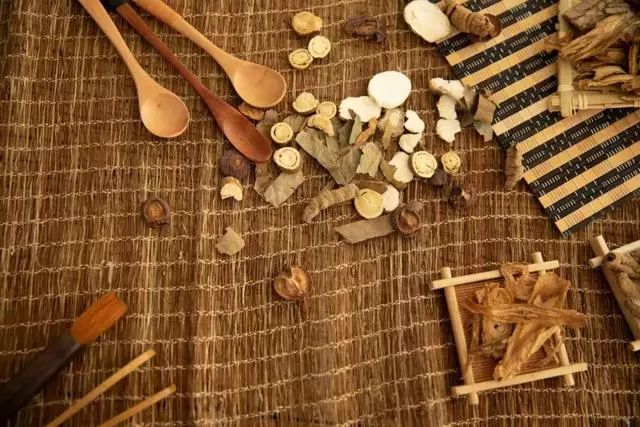
Pinellia (Ban Xia) and Selfheal (Xia Ku Cao)
Pinellia and Selfheal are used together in the “Cold Lu Medical Talk: Insomnia”. Pinellia dries dampness, transforms phlegm, and harmonizes the stomach; Selfheal clears liver fire and resolves stagnation. Together, they combine bitter and acrid properties, balancing cold and warmth, harmonizing yin and yang, calming the mind, and aiding sleep. They are used for hypertension, dizziness, and insomnia.
Salvia (Dan Shen) and White Peony (Bai Shao)
Salvia and White Peony are used together in a modified formula for calming the heart and harmonizing the liver. Salvia has effects as described in the combination with Kudzu Root; White Peony nourishes blood, astringes yin, softens the liver, and alleviates pain. Salvia invigorates blood while White Peony nourishes yin, combining movement and stillness, effectively nourishing blood, invigorating blood, benefiting yin, aiding sleep, and relieving irritability. They are used for various conditions of blood deficiency and insomnia.
Lotus Leaf (He Ye) and Oyster Shell (Mu Li)
Lotus Leaf and Oyster Shell are used together in a modified formula for dizziness. Lotus Leaf is light and clear, uplifting the spleen and stomach qi, effectively clearing summer heat and promoting urination; Oyster Shell is heavy and sinks, draining the liver and gallbladder’s turbid yin qi, calming the spirit, subduing yang, and softening masses. Together, they balance uplifting and sinking, effectively clearing and draining, calming the liver, subduing yang, and promoting urination. They are used for various conditions of dizziness and heat.
Garlic (Xie Bai) and Pulsatilla (Bai Tou Weng)
Garlic and Pulsatilla are used together based on years of clinical experience by Wang Shi. Garlic disperses and drains, warming and promoting movement, opening channels, and guiding stagnation; Pulsatilla clears heat, detoxifies, cools blood, and stops dysentery, resolving swelling and dispersing masses. Together, they balance warmth and cold, effectively warming the spleen, clearing intestinal heat, promoting movement, detoxifying, and stopping dysentery.
Rubia (Qian Cao), Inula (Xuan Fu Hua), and Bupleurum (Chai Hu)
Rubia, Inula, and Bupleurum are used together in a modified formula for harmonizing the body. Rubia moves through the blood level, cools blood, stops bleeding, invigorates blood, and promotes menstruation; Inula descends qi, relieves asthma, transforms phlegm, and promotes urination; Bupleurum disperses heat, relieves liver stagnation, and raises yang qi. Together, they treat both qi and blood, balancing ascending and descending, effectively promoting liver qi, transforming phlegm, relieving distension, and invigorating blood circulation.

